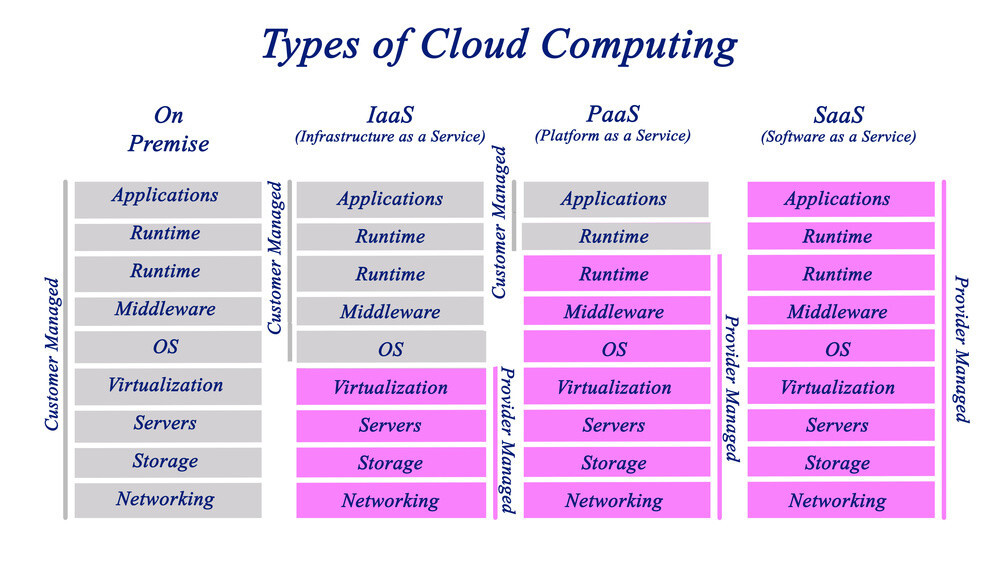There are many ways to move a business to the cloud, but many IT departments still don’t understand cloud migration strategies and basics. For example, many companies are offering the option of using Amazon Web Services for their cloud migration needs. However, most companies do not realize that using Amazon’s cloud services may not be the best option. In fact, it could cost them more money in the long run if they decided to go with an external cloud service provider instead.
Table of Contents
What Can Cloud Services Do For Your Business?

When it comes to cloud migration SaaS, PaaS, and IaaS are important terms you need to not only know about but understand.
Companies need to understand how cloud services work before they decide which cloud provider to use. They must also understand the differences between SaaS, PaaS, and IaaS cloud services. These two types of cloud services are quite different, and each one has its own benefits. Additionally, cloud services may be used internally, as well.
It should be relatively easy for a company to determine whether cloud services are right for them. The main benefit of using cloud services is that they provide a scalable solution. This means that once a company decides to use cloud services, it can start generating applications almost instantly. Other departments within the company can then use these applications. Because many applications exist, they have the potential to create a dramatic increase in productivity.
Cloud Migration Strategies

Before you even think about starting a cloud migration you need to have a well-laid-out strategy to avoid any complications and pitfalls.
Another common cloud migration strategy and a basic thing to remember is that cloud services are flexible. This means that they can be adjusted to meet the needs of any company. For example, some cloud providers offer highly customized options for their customers. These can often include custom messaging systems and data centers. Other cloud services can also be used for non-business purposes, such as shopping carts.
Basic cloud migration strategies and tips include the need to have an IT department ready to handle any changes. Migration services can require a significant adjustment to employees’ working hours. It is also important for a company to make sure that it will be able to properly support any technical barriers that might be encountered during the process. There should also be a plan for migration support that uses proper documentation and tracking should be in place to ensure everything is done according to schedule.
Another tip for migration is to use the right cloud services for the right job. This means that a company should not assume that it can use any of the available cloud services without making changes to how it works. This can prove to be a mistake and hinder future progress.
Things to Be Cautious of

Performing a cloud migration isn’t something that you just decide to do. It takes a lot of planning to make sure everything goes smoothly and is performed correctly.
Migration from legacy hosting to cloud services should be done carefully. Migration is often done for reasons of compatibility or convenience. However, both of these motives are flawed. Compatibility is hard to measure, and companies usually move to the cloud before they determine whether cloud services are right for their needs or not. Moreover, companies often move to the cloud before testing the waters and seeing how their business performs using their new cloud service.
Migration from other vendors to cloud services requires additional preparation. It involves creating a migration strategy and monitoring the progress made regularly. Migration services can be an excellent way to reduce the impact of changes made to your software stack. Migration from legacy hosting requires the creation of a migration dashboard and reporting. There are plenty of cloud services to choose from, so do some research and use cloud migration strategies and basics made simple to help you with your migration.
Migration from VPS, a virtual private server, to cloud services can be more complex than previously thought. The primary reason for this is that there is a need for VPS administrators to manage the underlying infrastructure. At the same time, the cloud relies on its own infrastructure to provide cloud-based applications. As such, virtualization technology is important in cloud services, as it helps administrators control and protect critical applications. Virtual servers and cloud services must also support high availability and failover. If the VPS administrator cannot access the server, the applications cannot be accessed, regardless of the physical server’s state.

Migration from one cloud platform to another is also more complicated than earlier cloud migration strategies, and basics made simple examples. This is because VPS uses different technologies and custom applications. This requires more than just converting files between platforms. Also, because VPSs have various functionality levels, administrators need to know about every available feature to migrate to the most appropriate setting. Additionally, different cloud services offer different levels of service support, which further complicates the migration.
There are many cloud computing options, and each of them has its own strengths and weaknesses. A company’s cloud service selection depends on several factors, including a budget, operational needs, and future business plans. It is ideal for researching several cloud services before making a decision, as each of them has different strengths and weaknesses. Furthermore, different cloud services offer different cloud migration strategies, and basics are made easy. The best approach is to conduct comprehensive cloud services research and determine the most suitable option for its requirements.
How to Choose the Right Cloud Migration Service for Your Needs

How to choose the right cloud migration service for your company begins with understanding the characteristics that define these services. The most important consideration is what will happen once I am done transitioning my data. Do you need me to do it personally? If so, how long will it take? What equipment do I need to get started? These are all questions you should ask yourself and, depending on your answers, consider carefully before making a decision.

There are many common cloud services available to businesses of all sizes. Two of the most popular are Microsoft and Amazon. If you are considering moving your data to the cloud, consider one or both of these companies. Both of them have built-in migration facilities.
Once you have chosen the cloud you wish to use, there are several things to consider to get your project off the ground. One of those considerations involves what your budget constraints are. If you have an unlimited budget, you might be able to hire a full-time team to do the work. That’s an option you need to consider carefully, though. If your budget isn’t unlimited, but you have limited resources, outsourcing is a viable option. Consider the time, resources, and financial outlay required to hire your own team or pay a third party to do it for you.
While some cloud migration companies charge per service or database, most charge by the hour. Businesses often choose a service based on availability and cost-effectiveness. You want to make sure you’re not spending money that you don’t have to and can afford to spend on the migration. Outsourcing eliminates the cost and hassle of purchasing more materials and supplies to complete the job.
What Else Should I Be Looking For?

Choosing a cloud migration service that is the right fit for your company is essential. You don’t want to hire a team to do your migration that ends up disappearing in the middle of a migration.
Another consideration for choosing the right cloud migration service for your needs considers the technology used by the company you outsource to. Many companies use proprietary technologies, and you should research your options before deciding which cloud platform to use. Microsoft SharePoint, for example, is supported by all major browsers. But what if your target audience doesn’t use Windows, or your employees or customers use Macs? You’ll still be able to access your files through other web services.
Migration platforms also vary significantly in terms of features and functions. Take care to choose a cloud with simple interfaces that allow you to set up and utilize the services quickly. Features such as custom fields and data customization will enable you to customize your documents’ information, ensuring your documents are easy to read and understand for your end-users. Migration services that provide rich reporting functionality are also important in any cloud development project.
When you’re looking at how to choose the right cloud migration service for your needs, make sure the company you choose has the experience and a track record of success. This is an investment that will pay off over time with the speed and efficiency of your company’s online presence. And, with the right cloud platform, you’ll be able to manage everything from anywhere.
To find the best company for choosing the right cloud migration service for your business, start by comparing pricing and capabilities. Find out how much storage, bandwidth, and file space each company offers to determine which one will be the best fit for your business’s needs. Remember to keep your options open when considering these types of services. Your company might have different needs in certain areas, so it’s important to have a plan in place. With the right cloud platform and migration service, you can easily and effectively handle all of your business’s data on the cloud.


Recent Comments